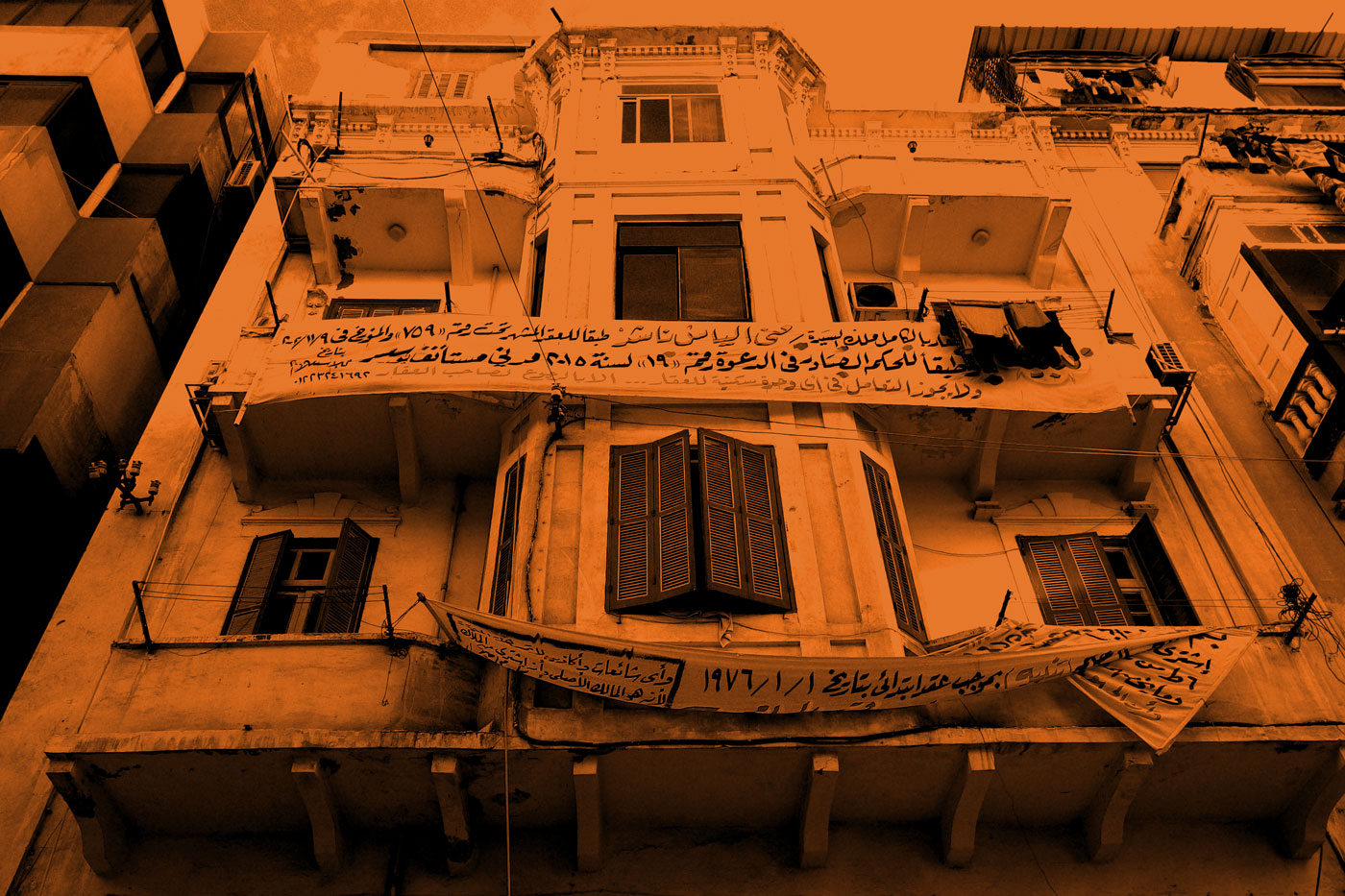Durable Housing
Table of Contents

Summary:
Official statistics reveal that about 3.2% of households live in non-durable housing; condemned buildings in a pronounced state of disrepair or in so-called unsafe areas prone to rock-slides and flash floods. While a large portion of these buildings can be repaired, and the imminent danger to unsafe areas may be mitigated, action has been slow or non-existent because of a complex situation brought on by rent-control, municipal corruption and informal tenure. This has meant that around 200 people lose their lives, and over 800 families are made homeless as a result of over 390 residential building collapses a year.[1]
How is the lack of housing durability a problem?
The collapse of a home and the loss of shelter for families cannot be measured as its effects can be fatal, and the circle of devastation large. Besides the obvious tragedy of death, in the absence of proper compensation mechanisms, families that survive building collapses can ultimately become poorer as severe injuries or trauma (post-traumatic stress disorder),[2] can lead to disabilities that in turn lead to loss of earnings. Displacement, temporary shelter and relocation to alternative shelter result in deteriorated mental and physical health,[3] increased spending, temporary unemployment and long term underemployment.[4]
Surviving households are pushed further into poverty after collapses that leave them without their private belongings, personal investments and life-savings. A mere 7% to 10% of Egyptians have a bank account, meaning that any savings are usually kept at home, while most families spend the entire duration of their daughters’ childhoods accumulating her gehaz, a trousseau consisting of kitchenware and linens for her marital home.
In the face of natural disasters, precarious housing is the most vulnerable to collapse. This was the case in 1992, when 552 people were killed and almost 10,000 injured, with thousands made homeless after an earthquake hit central Egypt for less than one minute.[5] In 1994, a wave of devastating flash floods led to the deaths of 600 people and the displacement of 110,660 families in a number of villages in Upper Egypt, after destroying 11,148 houses and damaging another 11,085.[6]
Who faces problems due to the durability of housing in Egypt?
Official statistics on repair decrees, demolition decrees and unsafe areas reveal that 3.2% of households in Egypt are living in precarious or non-durable housing. Precarious housing seems to be highest in urban governorates: Port Said had the highest incidence where it affects 11.7% of the population, followed by 8.4% and 8.3% of the population in Cairo and Alexandria respectively. The lowest governorate with households living in precarious housing was Minya, at 0.2% of households .
However, this data is limited as it does not reveal the extent of urban disasters. In one year with no unusual natural disasters (July 2012 to June 2013), 192 people were killed and 824 families were displaced due to 392 building collapse incidents.[7] In contrast to the precarious housing data, almost thirty percent of displaced families were in Alexandria, 11% were in Cairo and less than one percent in Port Said. A further 1723 families were made homeless due to 766 incidents of imminent structural failure.[8]
Why do people live in non-durable housing?
A yearlong study of building collapses was able to categorise incidents into two main categories, with eight sub-categories.[9]
The major category in terms of number of incidents was lack of inspection and supervision of buildings and building work by the relevant authorities (54% of incidents). Lack of inspection and supervision resulted in four types of incidents of collapse: pronounced structural decay (old buildings that were not properly maintained or repaired); detrimental actions within the building (mostly residents modifying structural elements without proper supervision); detrimental actions adjacent to the building (construction work on adjacent sites); and unsound construction (buildings not built to standards). That was despite a legislative framework that governs all actions that may occur in or near a building: digging, construction, demolition, or, after the completion of construction, management, maintenance and allowable activities.
The second reason behind building collapses was lack of planning. State agencies concerned with planning and local development were not able to mitigate the effects of outside factors that ultimately led to incidents of building collapse. These include: rising ground water mostly due to lack of improved sanitation (destabilising mud-brick houses in rural areas); fires and explosions (mostly misuse of residential gas canisters); acts of nature (flash floods and storms); the failure of infrastructure (burst water and sanitation pipes, collapsing bridges or electricity towers).
Ultimately, precarious housing is cheaper than more stable housing, where the acute problems of affordability have made it the only choice for many.
What can be done?
- Finance program as part of the government’s Social Housing Program to repair and/or rebuild all condemned housing within three years, while providing alternative housing for tenants until program is concluded.
- Expand current Unsafe Area Upgrading Programme to include rural areas (current mandate of urban areas only), while prioritising Level 1 unsafe areas through danger mitigation measures or voluntary relocation.
- Setup executive Disaster Mitigation and Relief agency with sufficient funds to coordinate and address disaster relief.
Methodology:
Definitions:
Egypt’s 2014 Constitution states in Article 78 that that “the state guarantees to its citizens the right to adequate, safe and healthy housing in order to preserve human dignity …” Article 59 states that ” a safe life is the right of every human being, and the state is committed to provide security and peace of mind for its citizens…”
The International Covenant on Economic, Social and Cultural Rights defines the right to adequate housing (Art 11), as a good and safe for habitation (General comment 4/1991).
UNHABITAT defines durable housing as housing built on a non-hazardous location and that has a structure permanent and adequate enough to protect its inhabitants from the extremes of climatic conditions like rain, heat, cold and humidity.[10]
Measurement Tools
According to UNHABITAT, the housing durability indicator can be measured by calculating the “proportion of households living in a housing unit considered as ‘durable’. [11]
Methodology for measuring housing durability in Egypt
Official statistics on repair decrees, demolition decrees and unsafe areas were used to estimate the number of households living in non-durable housing.
Repair and demolition decrees were mostly provided through the Ministry of Housing’s Organisation of Technical Oversight on Buildings (OTOB). The OTOB inventoried such decrees by buildings across most of the 27 governorates between 2009 and 2012. Some more updated data was gathered from media outlets that printed local reports. However, this is still a vast underestimation as there is still information missing regarding a number of governorates, leading us to label them as not available, rather than zero.[12] In the end, numbers of buildings were translated to numbers of units using a ratio of units to building from recent official data on construction.[13]
Units in unsafe areas depended on the Informal Settlements’ Development Facility’s (ISDF) National Map for Unsafe Areas produced in 2011.Units in levels one and two (imminent danger, and non-durable shelter respectively) were included.
The total number of units from both datasets was added. Here, an assumption was made that each unit is home to one household, since in the absence of in-depth data it is impossible to calculate vacant or overcrowded units. These households were then measured as a percentage of total households in each governorate in 2012.[14]
Footnotes
[1] EIPR 2014. Why are Houses Collapsing in Egypt? http://egyptbuildingcollapses.org/ [2] Some studies have shown that 25% of earthquake survivors experience PTSD. For example see Dai et al 2016. The incidence of post-traumatic stress disorder among survivors after earthquakes: A systematic review and meta-analysis. http://www.ncbi.nlm.nih.gov/pubmed/27267874 [3] Shelter 2004. Sick & Tired; The impact of temporary accommodation on the health of homeless families. http://england.shelter.org.uk/professional_resources/policy_and_research/policy_library/policy_library_folder/sick_and_tired_-_the_impact_of_temporary_accommodation_on_the_health_of_homeless_families Accessed 04.09.2016 [4] Tadamun 2015. The Hidden Cost of Displacement: The Move from `Izbit Khayrallah to Masākin `Uthmān. Tadamun 31.12.2015 http://www.tadamun.info/2015/12/31/hidden-cost-displacement-move-izbit-khayrallah-masakin-uthman/?lang=en#.V8wH3jWm2Pc Accessed 04.09.2016 [5] Reliefweb. Egypt - Earthquake DHA-UNDRO Situation Report No. 8 23 October 1992 http://reliefweb.int/report/egypt/egypt-earthquake-oct-1992-un-dha-situation-reports-1-9 Accessed 21.09.2016 [6]Reliefweb. Egypt - Floods DHA - Geneva Situation Report No. 4 22 November 1994 http://reliefweb.int/report/egypt/egypt-floods-nov-1994-un-dha-situation-reports-1-4 Accessed 21.09.2016 [7] EIPR 2014. Why are Houses Collapsing in Egypt? http://egyptbuildingcollapses.org/ [8] EIPR Forthcoming. The phenomenon of Housing Collapse in Egypt, Facts and Responsibilities. [9] EIPR Forthcoming. The phenomenon of Housing Collapse in Egypt, Facts and Responsibilities. [10] United Nations. Millenium Devlopment Goals Indicators. http://mdgs.un.org/unsd/mdg/Metadata.aspx?IndicatorId=0&SeriesId=711 [11] United Nations Human Settlements Programme. (2004, August). Urban Indicators Guidelines, Monitoring the Habitat Agenda and the Millennium Development Goals . Nairobi. [12] According to a statement by an former head of the OTOB, 285,000 buildings are condemned or in need of structural repair, while the total in the dataset is 102,671 ; see "Al-Taftish 'ala al-bina': 60 alf 'aqar ayil lil-suqut wal-Qahira tahtal al-martaba al-ula", Masrawy, 08.03.2014. http://goo.gl/NcSNcd [13] CAPMAS. Al-Nashra al-Sanawiyya lil-Marafiq wal-Iskan. 2007 to 2014 [14] Census data for 2006 was used to estimate number of households using population estimates for 1/7/2012. CAPMAS. Kitab al-ihsa’ al-Sanawi 2012 – al-Sukan. CAPMAS, Cairo 2012 and; CAPMAS 2008. 2006 Census of population and living conditions, Final results.

